Impacted Teeth
An impacted tooth is one that is not in normal position and function, and positioned so that further eruption is unlikely. Pathology is a frequent occurrence around impacted teeth, especially third molars.
Dental caries are common in third molars because it often difficult or impossible to maintain proper oral hygiene.
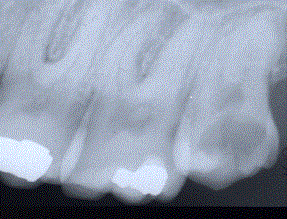
Third molar caries
Soft tissue inflammation, pain and infection often result from this inability to clean third molars. Pericoronitis, buccal and submandibular space infections can also result, which will sometimes cross the midline to cause a life-threatening Ludwig’s angina.
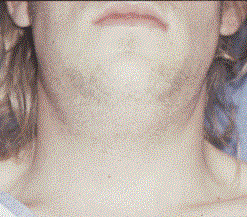
Ludwig’s angina
Third molars can also contribute to caries or periodontal disease of the second molars, and occasionally cause these teeth to be lost.
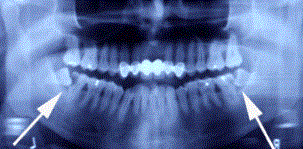
Second molar caries
Cysts and tumors can also develop around third molars, which can migration of the teeth and massive destruction of bone. These are usually benign odontogenic cysts, such as dentigerous cysts or odontogenic keratocysts, but much more aggressive tumors such as ameloblastomas are occasionally seen.



This example shows the development of a dentigerous cyst in a 45 year-old female over a three-year period.
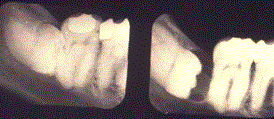

Dentigerous cyst development
This series of radiographs shows the development of a dentigerous cyst over a ten-year period. Note that the third molar was migrating distally, out of range of the bitewing films. A secondary infection of the cyst caused symptoms that led to a periapical film and panorex of the area in question. This illustrates the destructive nature of benign cysts.
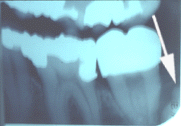

Dentigerous cyst (1 of 5)
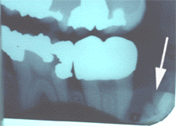

Dentigerous cyst (2 of 5)
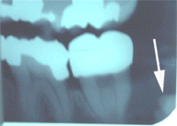

Dentigerous cyst (3 of 5)
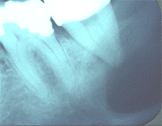

Dentigerous cyst (4 of 5)
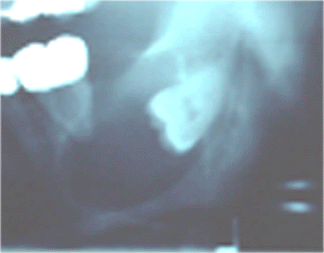

Dentigerous cyst (5 of 5) that developed over a 10 year period.
Third molars can sometimes contribute to mandibular fractures because their sockets can serve as the start of a fracture plane.
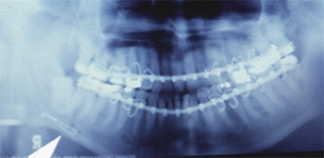

Mandibular fracture through third molar socket
Complications associated with the removal of impacted teeth usually increase with age. Younger patients are generally better able to tolerate surgical procedures. Inferior alveolar nerve damage is less likely when the roots of the third molars are not completely formed.
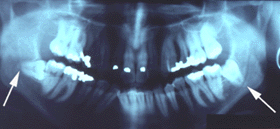

Third molar root development around inferior alveolar nerve
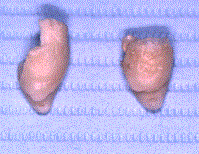

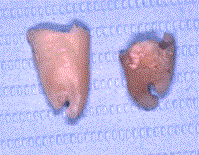

Periodontal healing of the second molars is also better and more predictable in the late teens and early twenties than later in life.
If the decision to leave an impacted tooth in place is made, the patient should be made aware that periodic radiographs and other appropriate examinations should be done to monitor the condition of the tooth and surrounding structures.
Early removal of impacted third molars is usually indicated. We cannot predict who will develop significant pathology, but the severity of some of the potential pathology warrants prophylactic removal of the third molars in the late teens or early twenties when the morbidity of the procedure is minimal.
